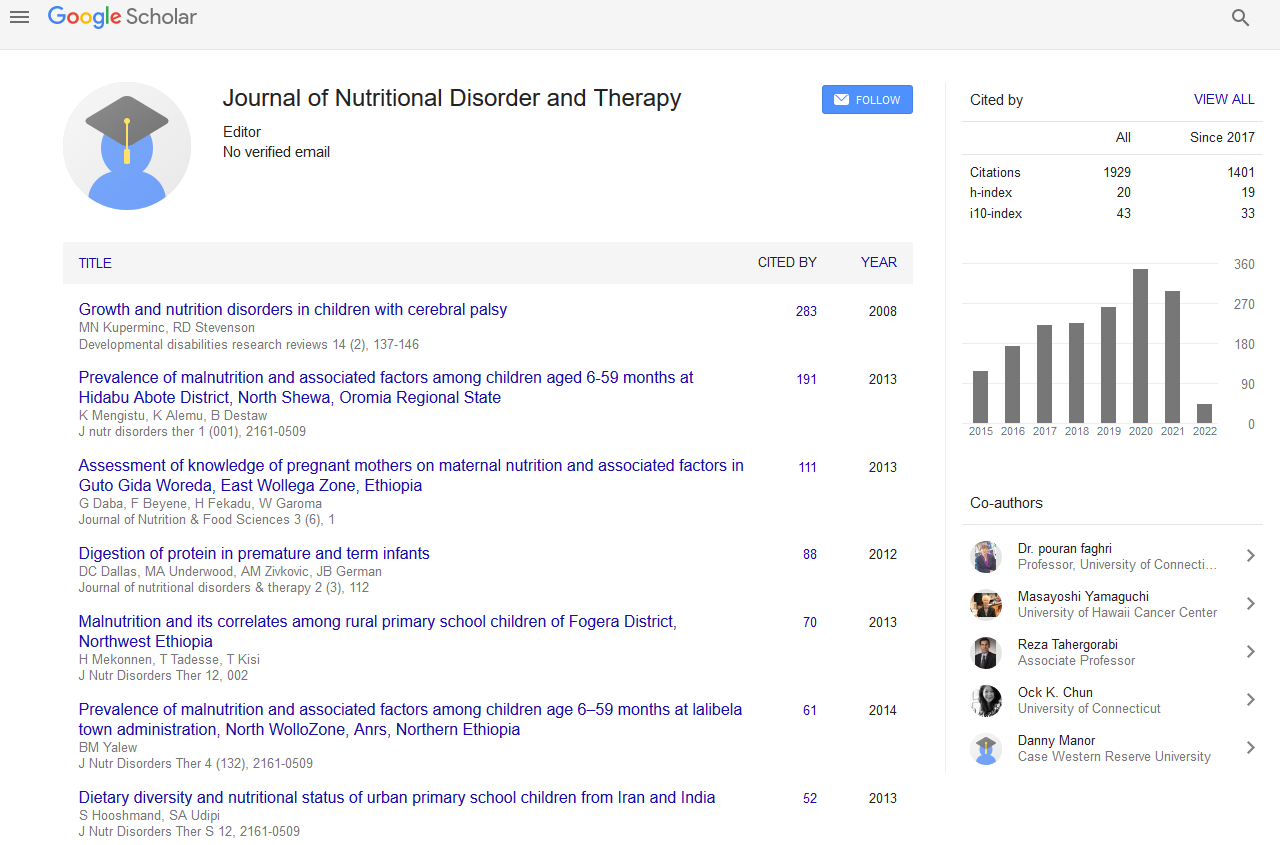Indexed In
- Open J Gate
- Genamics JournalSeek
- Academic Keys
- JournalTOCs
- Ulrich's Periodicals Directory
- RefSeek
- Hamdard University
- EBSCO A-Z
- OCLC- WorldCat
- Publons
- Geneva Foundation for Medical Education and Research
- Euro Pub
Useful Links
Share This Page
Journal Flyer

Open Access Journals
- Agri and Aquaculture
- Biochemistry
- Bioinformatics & Systems Biology
- Business & Management
- Chemistry
- Clinical Sciences
- Engineering
- Food & Nutrition
- General Science
- Genetics & Molecular Biology
- Immunology & Microbiology
- Medical Sciences
- Neuroscience & Psychology
- Nursing & Health Care
- Pharmaceutical Sciences
Abstract
Effects of Interval Training Versus Continuous Exercise on Anthropometric and Cardiorespiratory Fitness Markers in Obese Women
Cloud Kennedy Couto de Sá, Mário César Carvalho Tenório, Mariana Matos Freitas, Gaya Ribeiro Ruas, João Felipe Pereira Câncio, Luiz Agnaldo Pereira de Souza and Ana Marice Teixeira Ladeia
The purpose of this study was to test the hypothesis that interval training (IT) is as effective as continuous exercise (CE) in reducing markers of obesity in women with abdominal obesity and low cardiorespiratory capacity. Twenty-one women with central obesity (mean ± SD: 47±11 years old; 95.7±9.8 cm of waist circumference; 38.8 ± 4.5% body fat) performed CE (-20% of Ventilatory Threshold - VT) or IT (2 min of stimulus/2 min of recovery +20%/-20% of VT) during a 10 week period, 2 times per week, for 20 to 40 minutes per session. Anthropometric data was recorded and cardiorespiratory fitness was measured before and after intervention. After intervention, both groups exhibited reductions in waist circumference (IT group lost 3.3%, P = 0.022; and CE group 3.9%, P = 0.015), waist/height ratio (IT group lost 3.4%, P = 0.018; and CE group 4.5%, P = 0.019), and Conicity Index (IT group lost 2.4%, P = 0.014;
and CE group 3.9%, P = 0.017). Only the IT group reduced their weight (lost 1.4%, P = 0.019) and BMI (lost 3.5%, P = 0.024). After training, the VT increased 6.9% in the IT group (P =0.04), and 7.4% in the CE group (P = 0.04). VO2 Peak tended to be elevated after 10 weeks of intervention in the IT group (P = 0.08). These data suggest that a practical low-volume IT regimen during a short timeframe was as effective as CE in improving cardiorespiratory fitness and decreasing central obesity markers.


